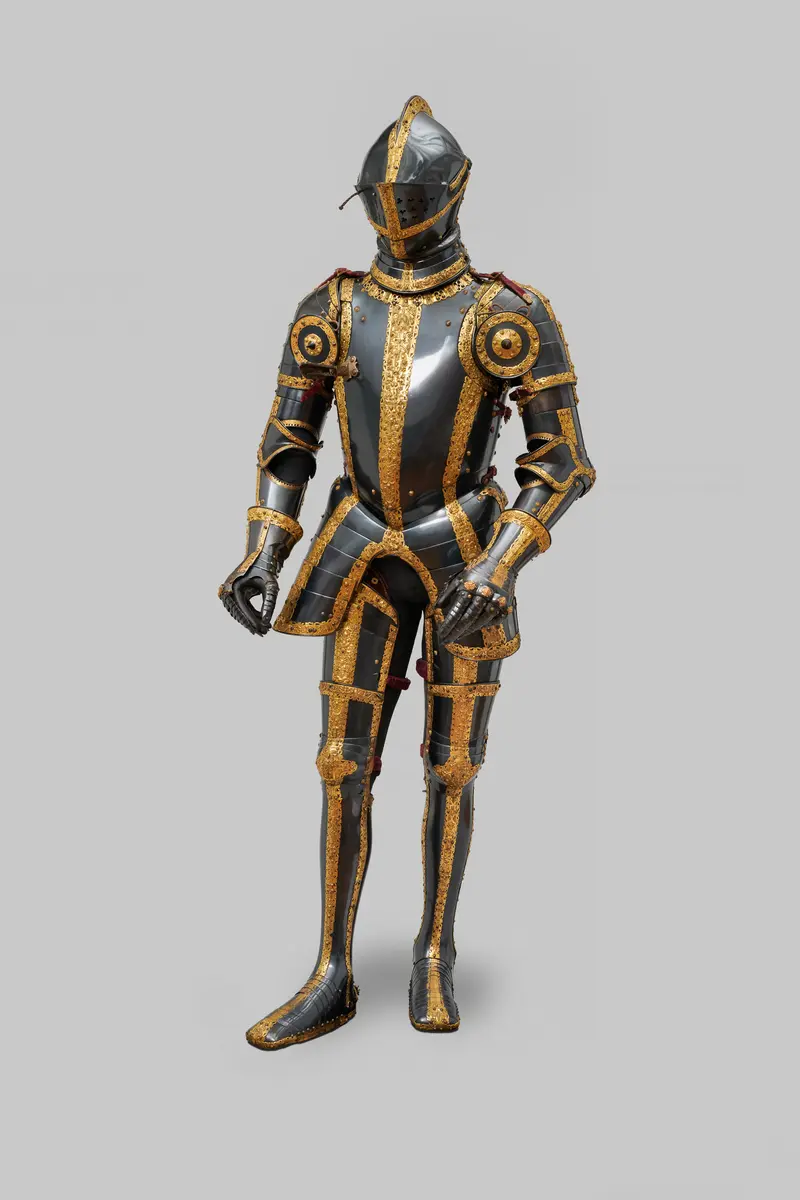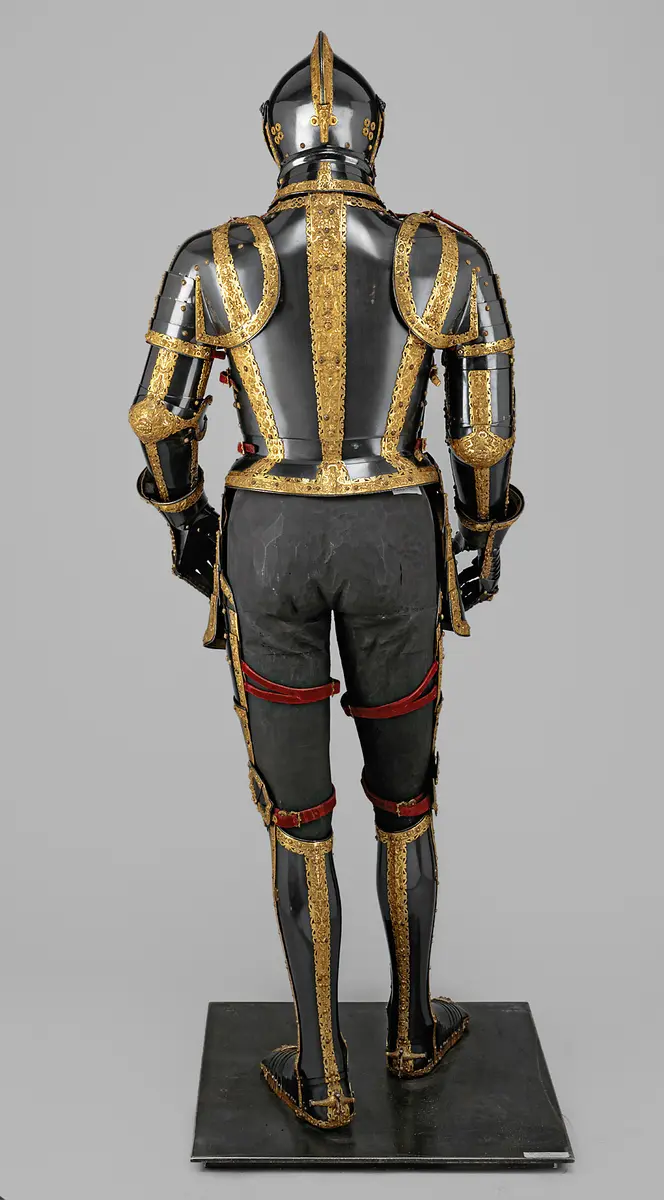Besitzer/in:
Kaiser Maximilian II., Sohn des Ferdinand I. von Habsburg Österreich zugeschrieben (1527 - 1576) DNB
Zeit:
datiert 1557
Objektbezeichnung:
Reiterharnisch (Küriss) der blau-goldenen Garnitur
Kultur:
Augsburg
Material/Technik:
Eisen, geschmiedet, getrieben, gebläut (modern?), teils geätzt. Ätzdektor: feuervergoldet. Dekorbeschläge: Buntmetall, teils gegossen, feuervergoldet, teils durchbrochen gearbeitet, teils graviert. Rüsthaken: Eisen, geschmiedet, geätzt, feuervergoldet. Löwenkopfnieten: teils Messing, teils Kupfer, gegossen, teils feuervergoldet. Schnallen, Ösen, Riemenzungen: Messing, teils feuervergoldet. Textil (Seidensamtreste, moderne Textilien). Leder (teils modern).
Maße:
H (inkl. Eisenplatte) 186 cm x B 69 cm x T 60 cm
H (exkl. Eisenplatte) 182 cm x B 69 cm x T 53 cm
Gewicht exkl. Figurine, exkl. Sockel: 28,85 kg
Signatur:
keine
Beschriftung:
auf Stirnstulp "1557"
Stempel / Zeichen:
keine
Bildrecht:
Kunsthistorisches Museum Wien, Hofjagd- und Rüstkammer
Inv. Nr.:
Hofjagd- und Rüstkammer, A 578

